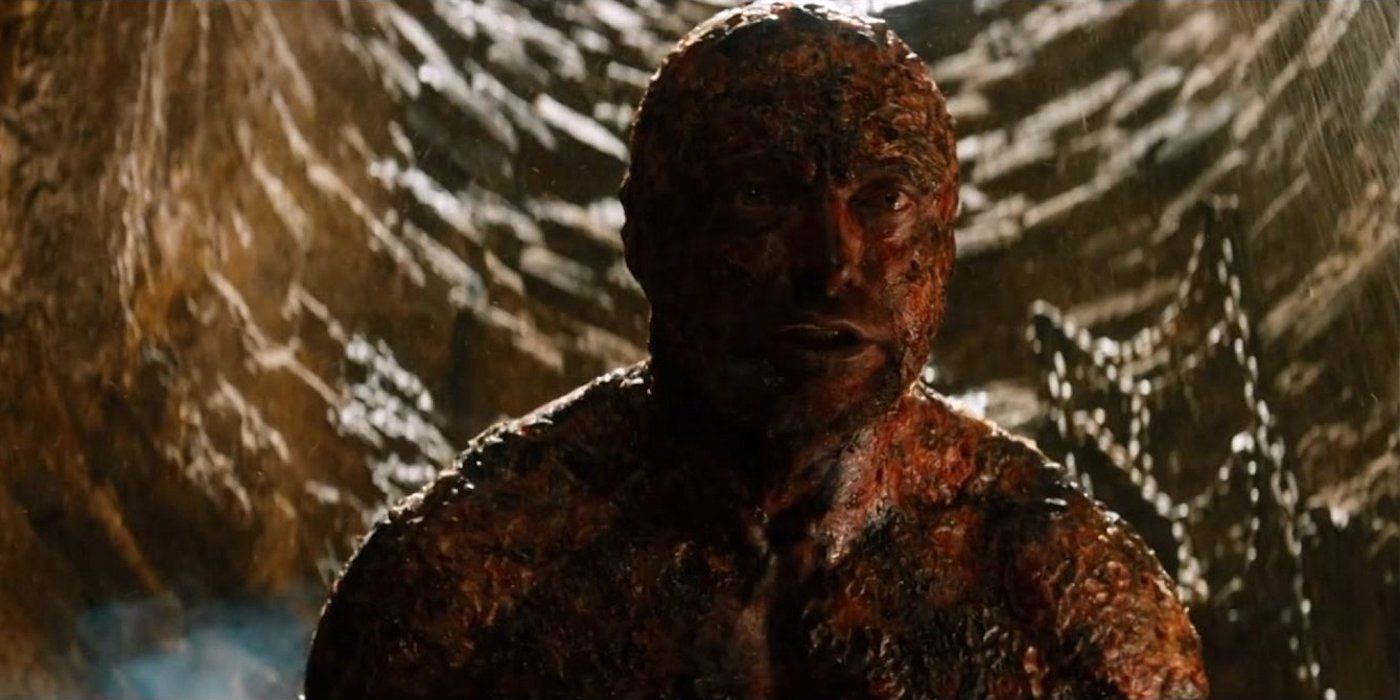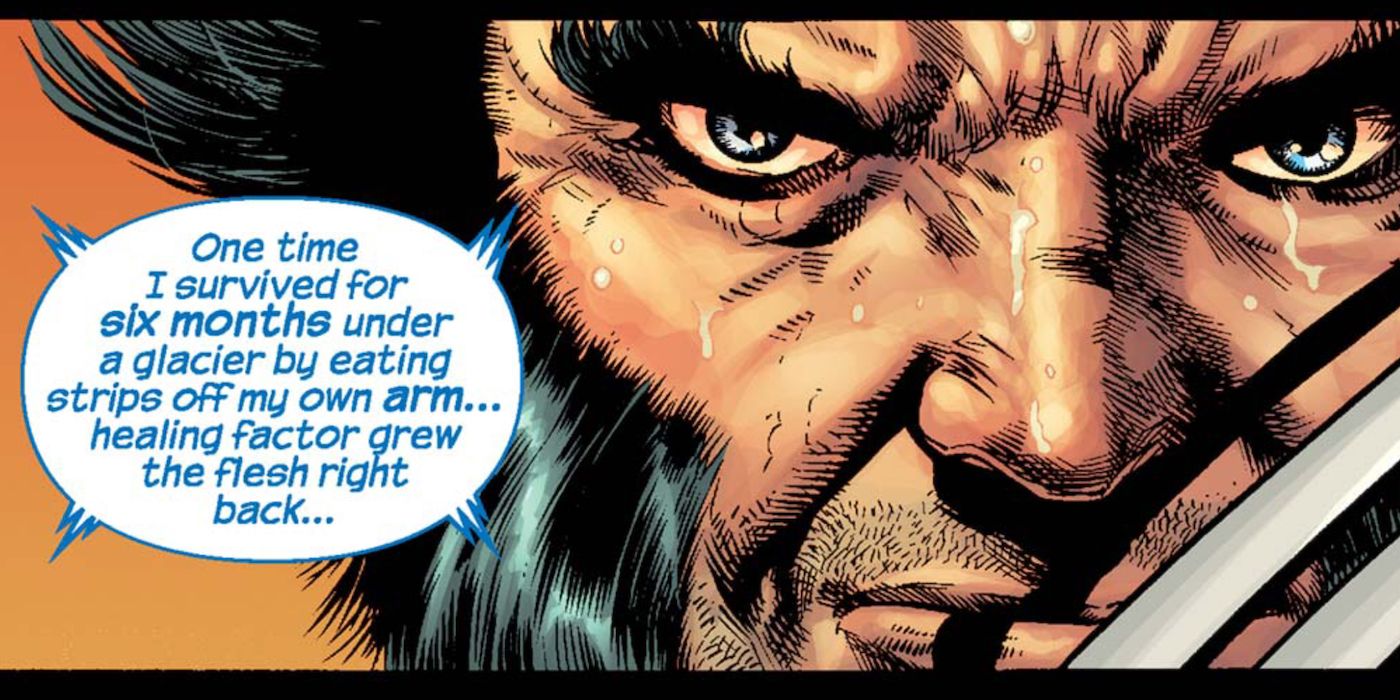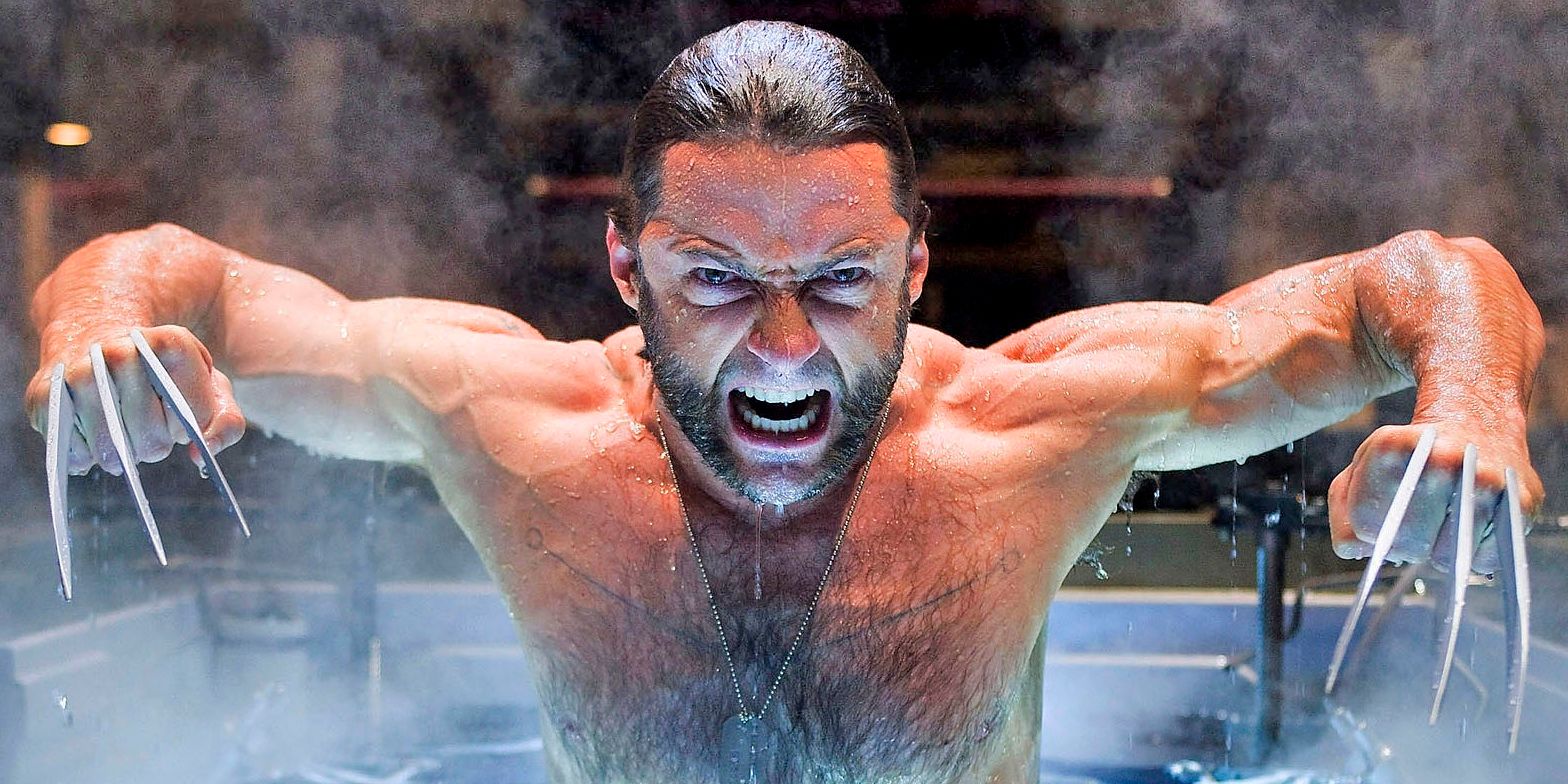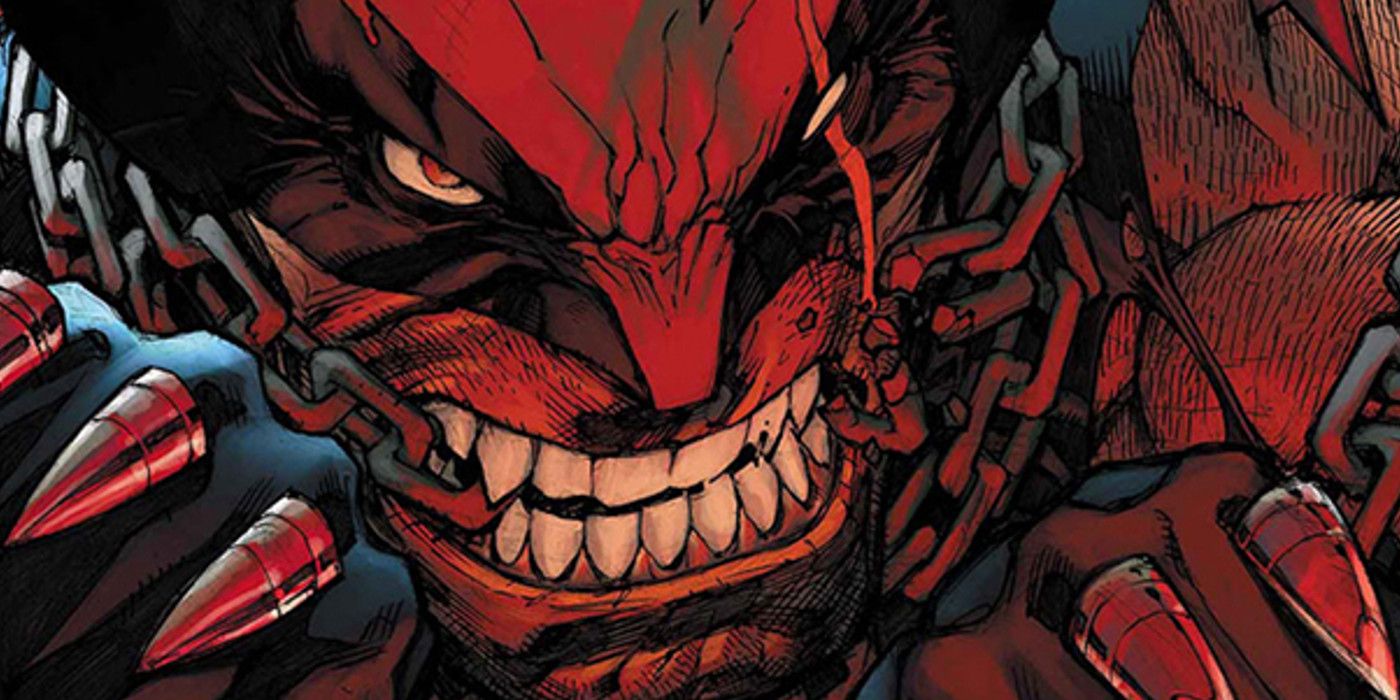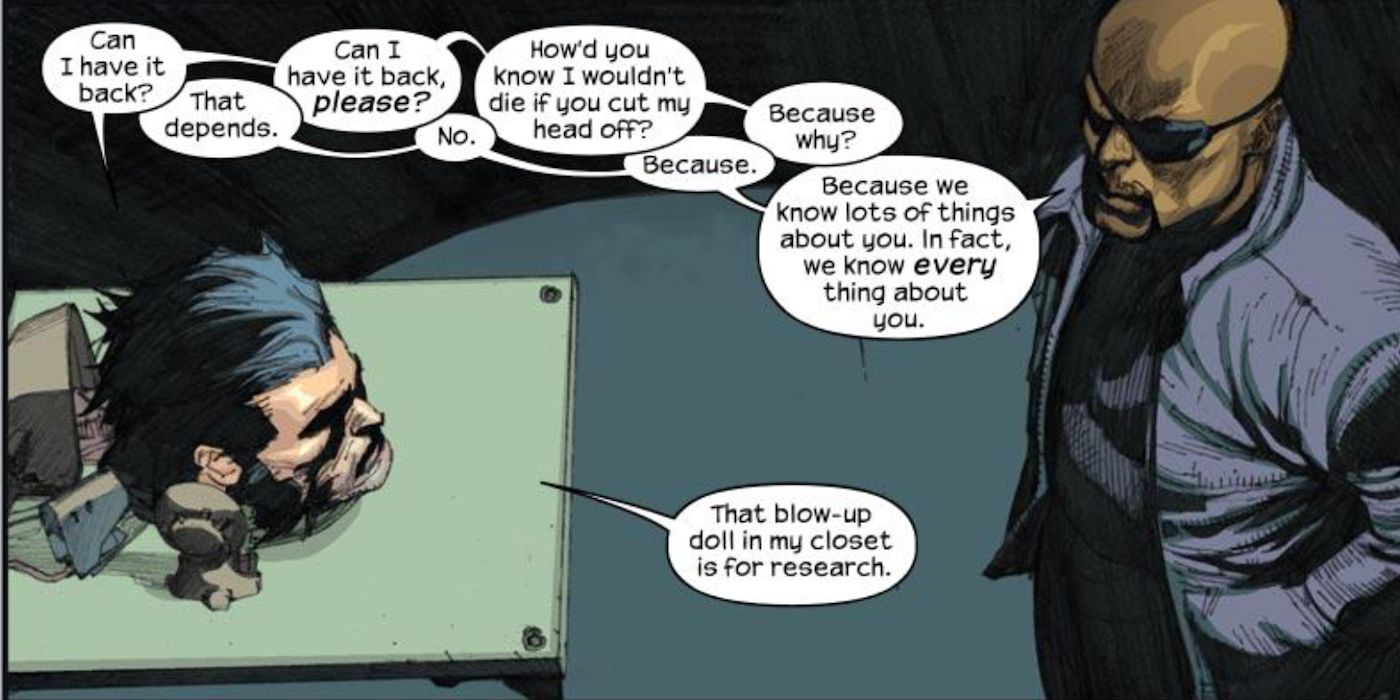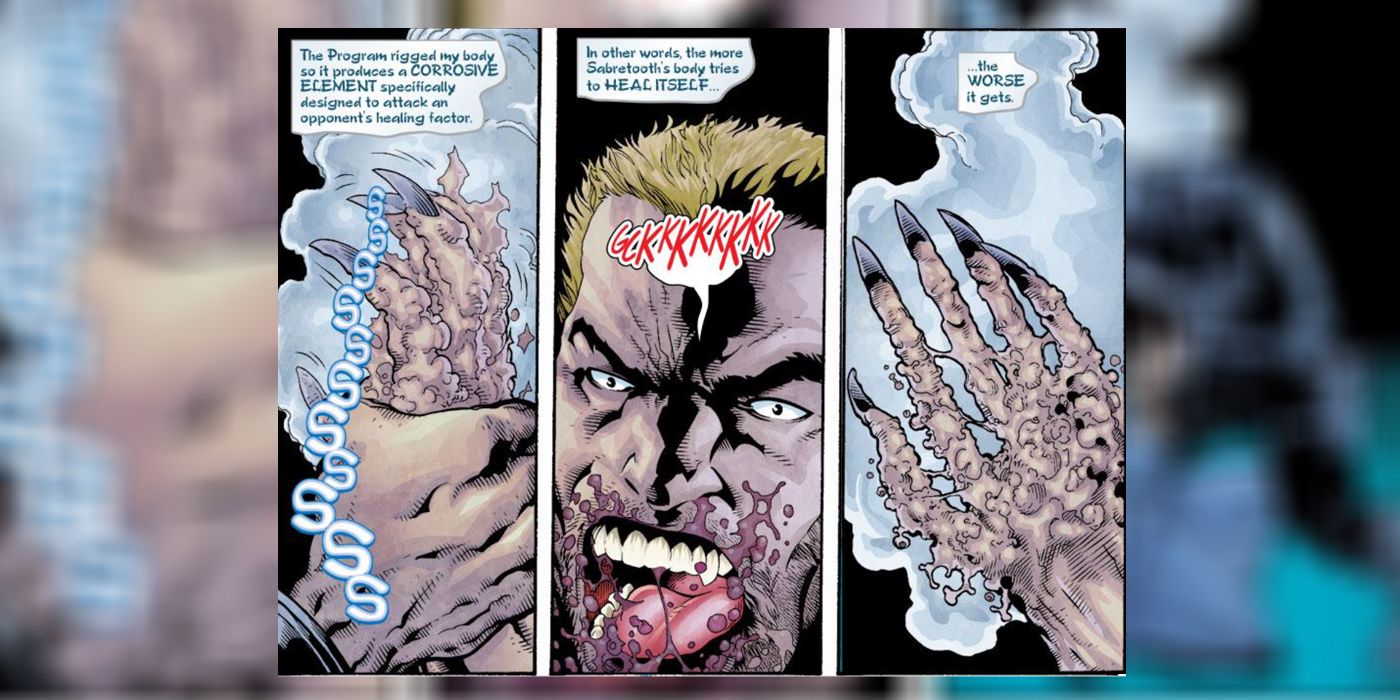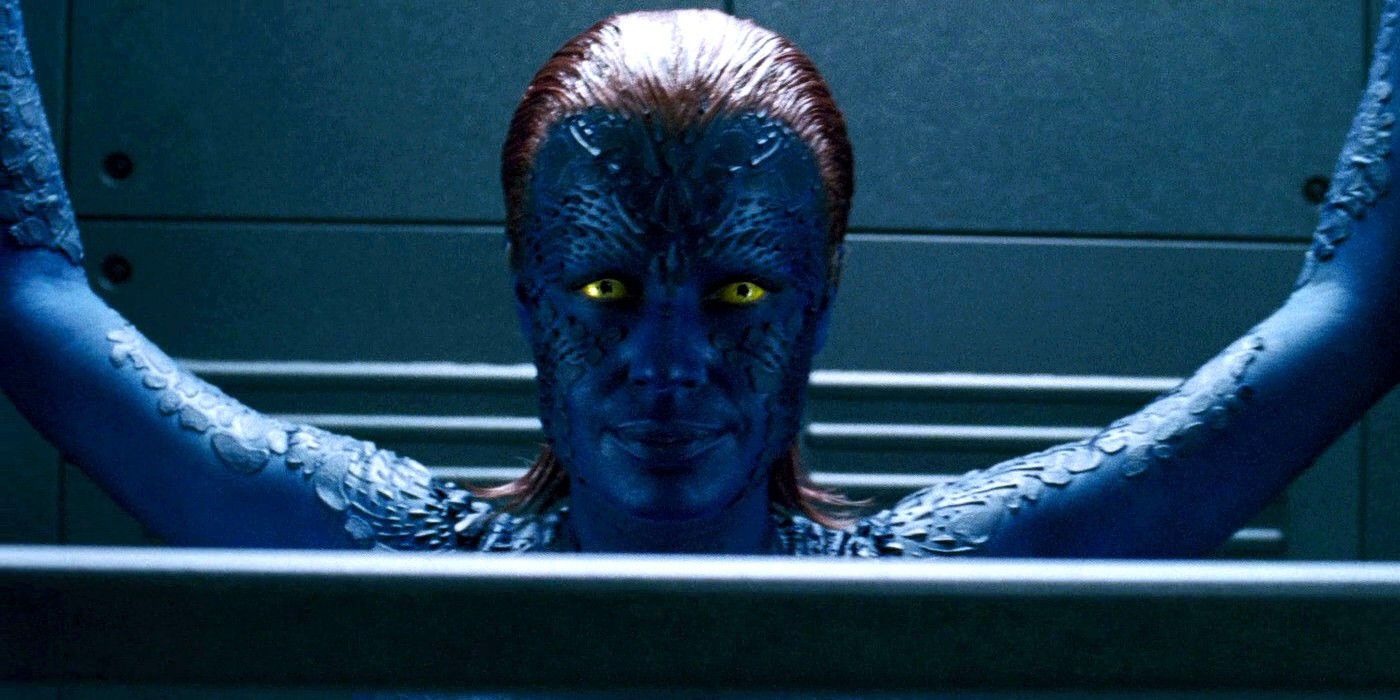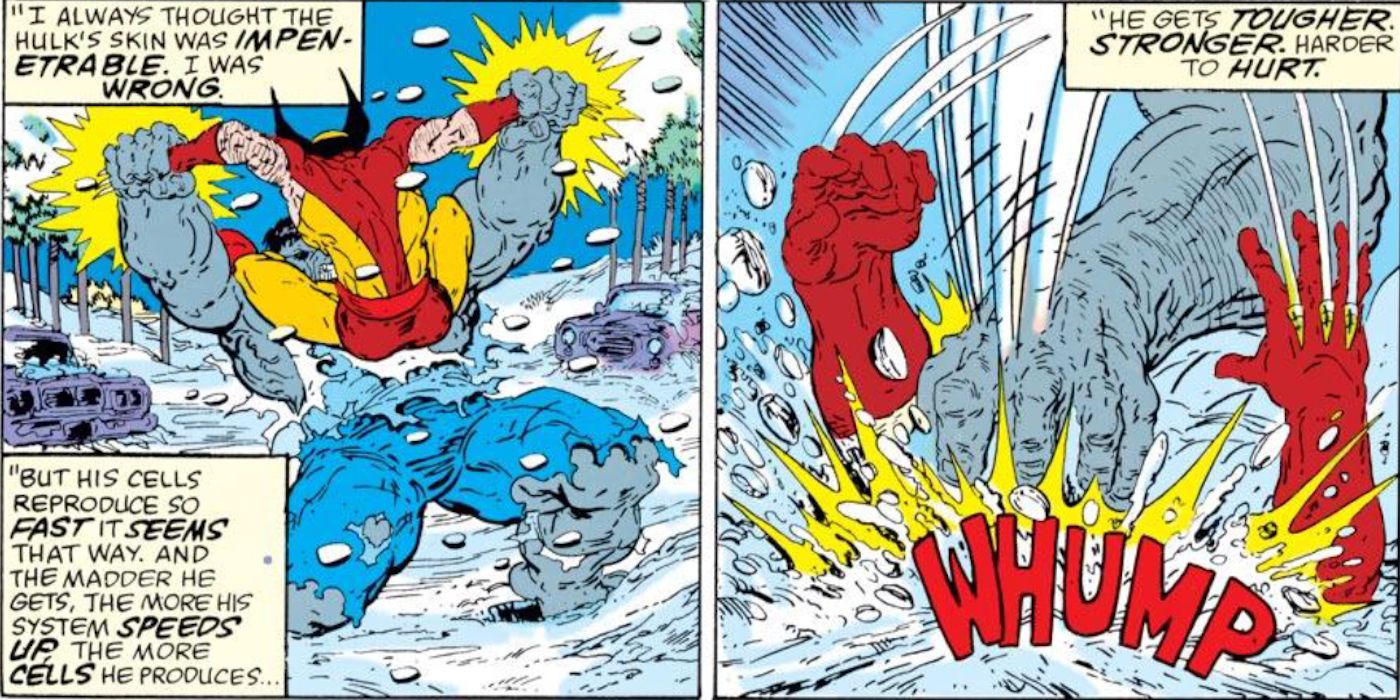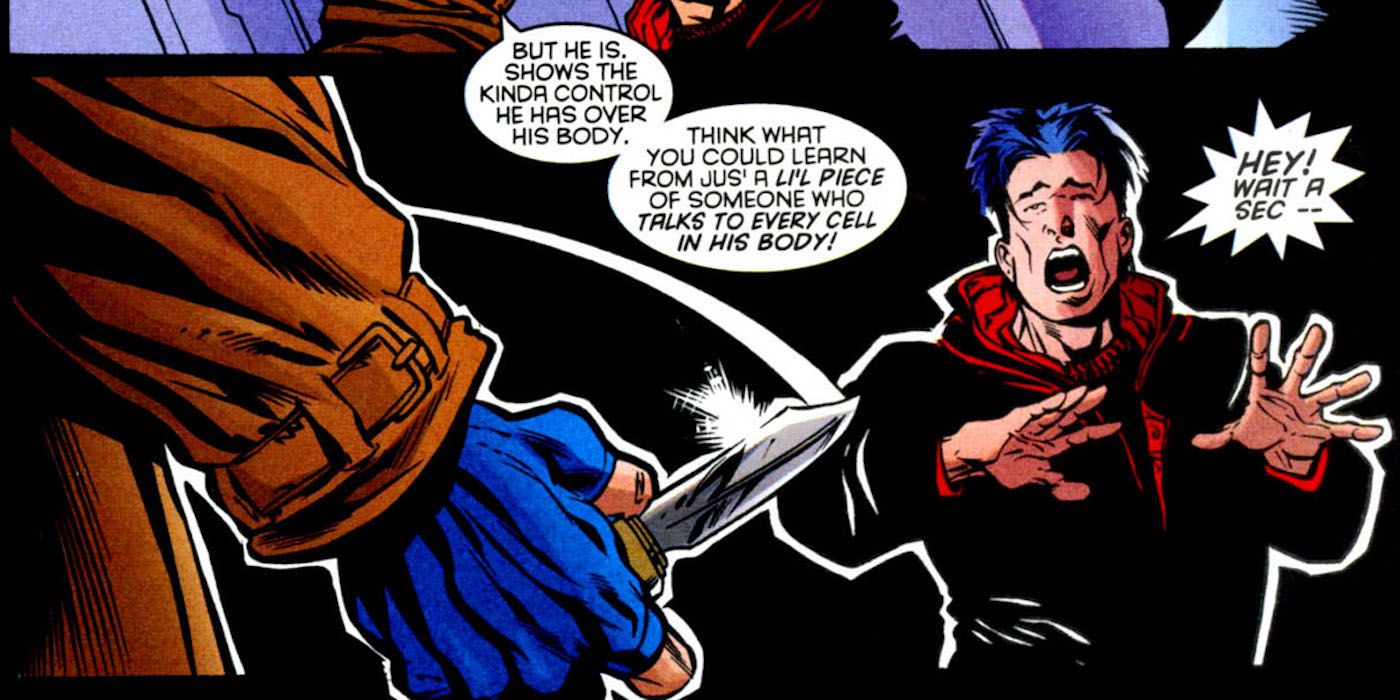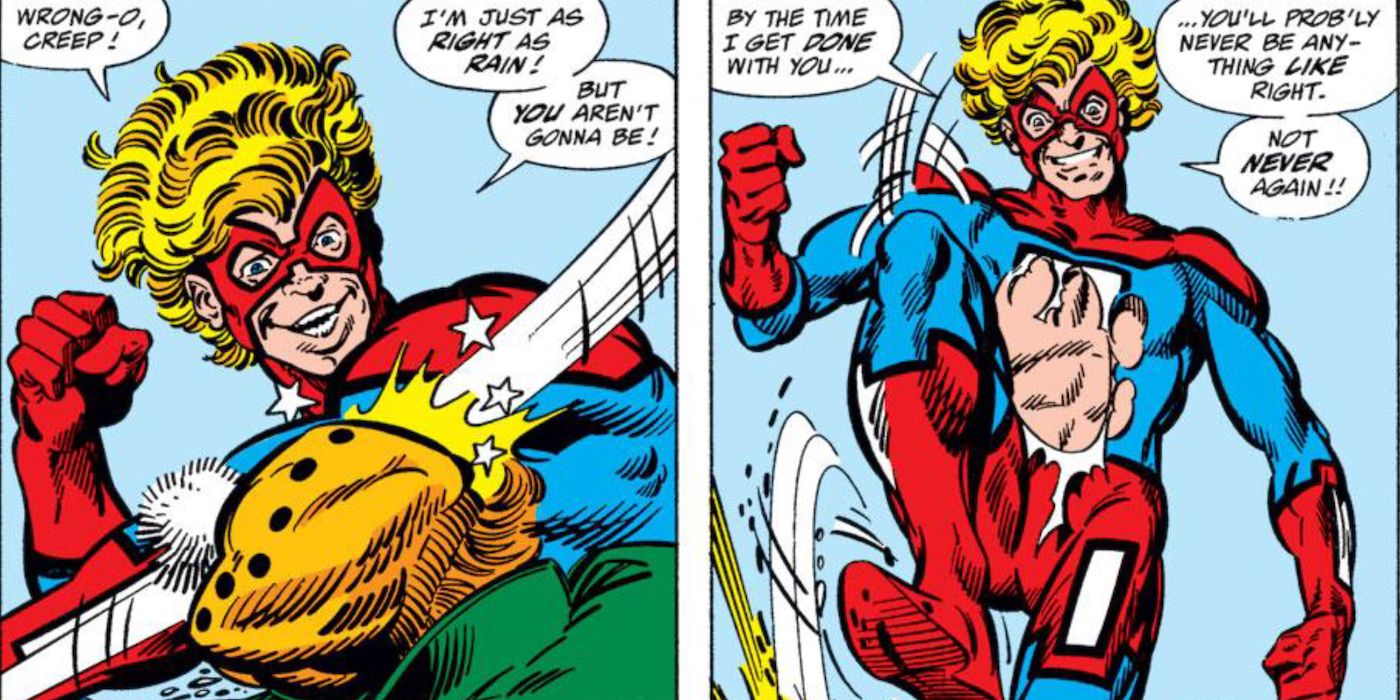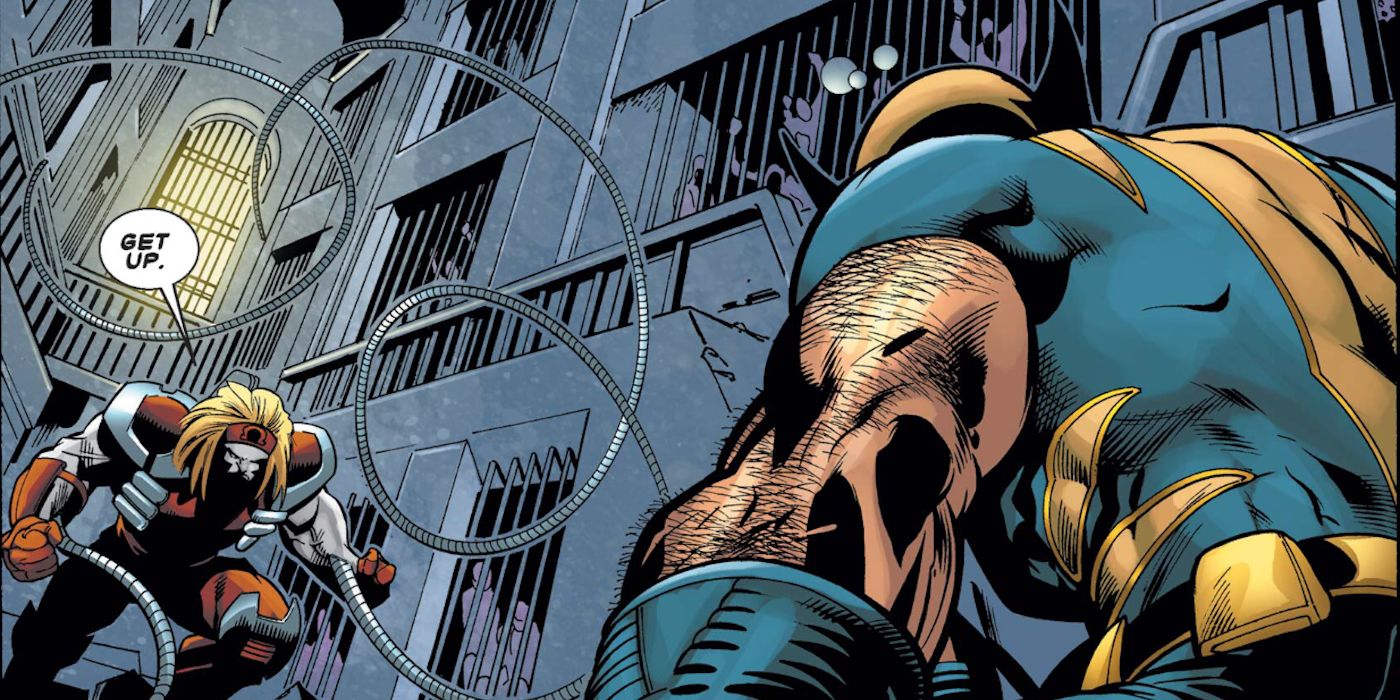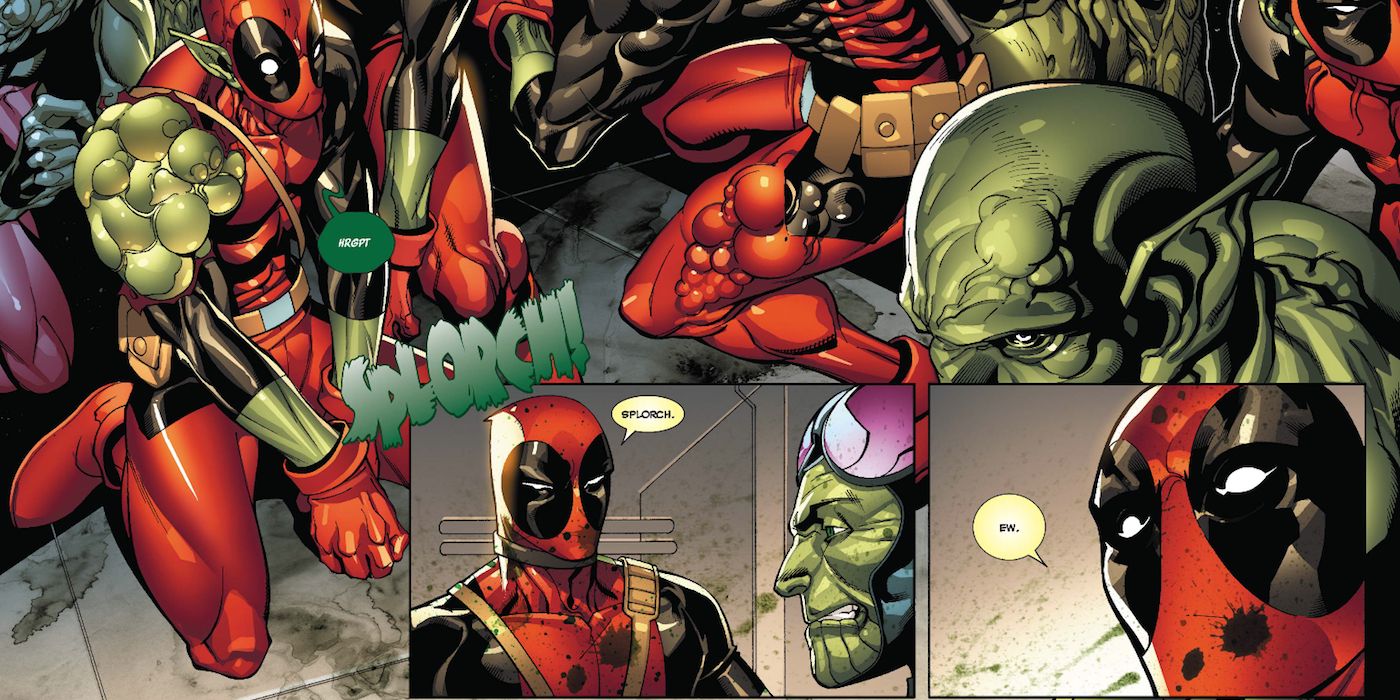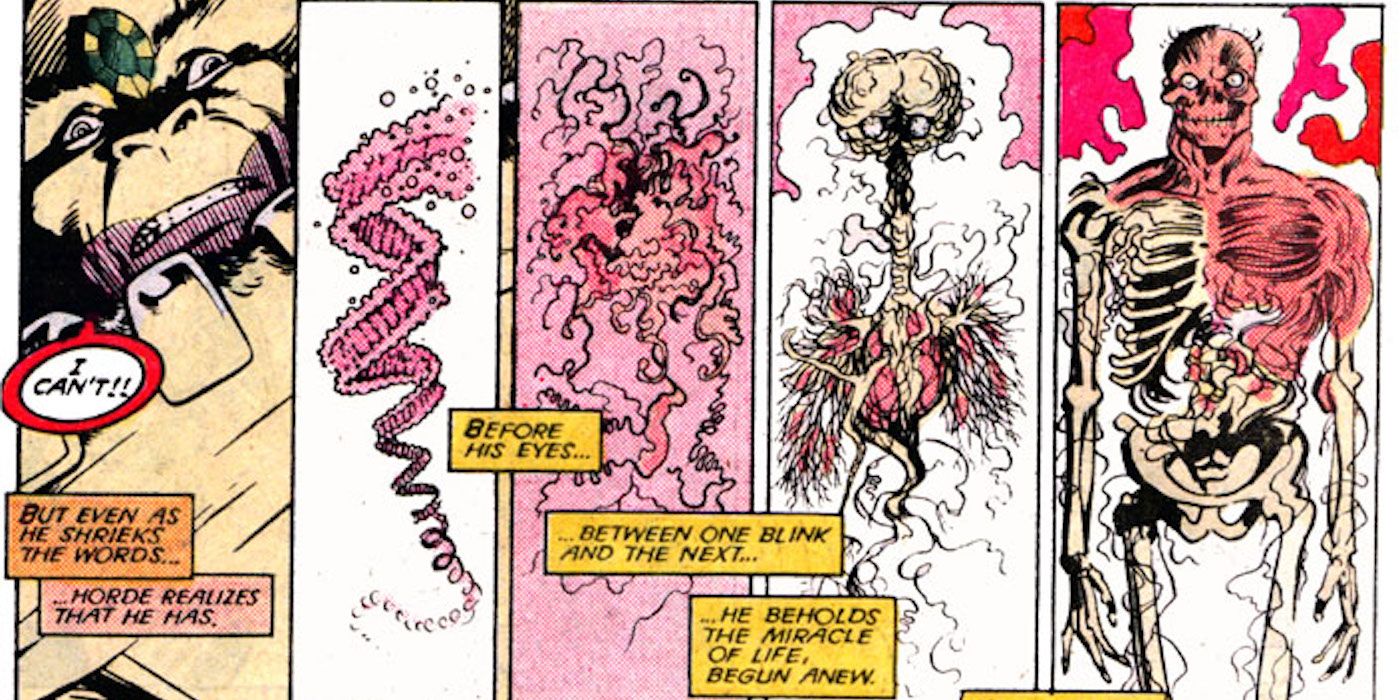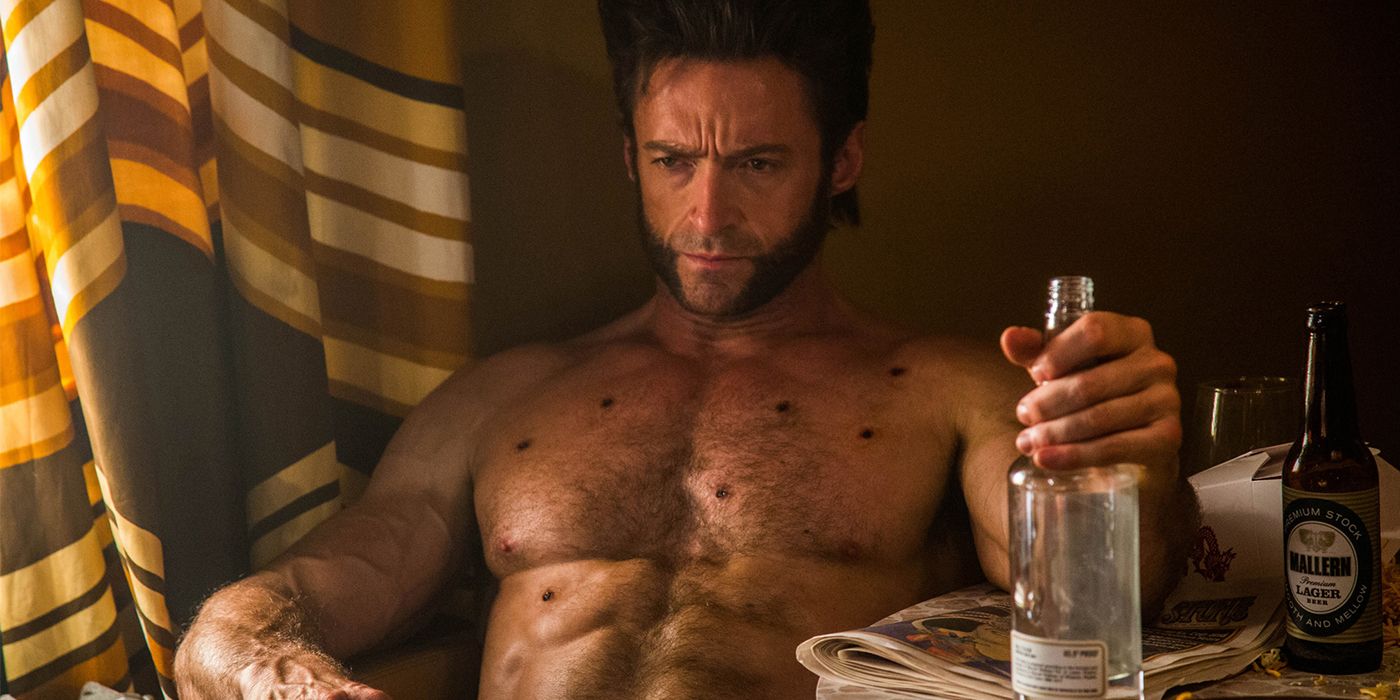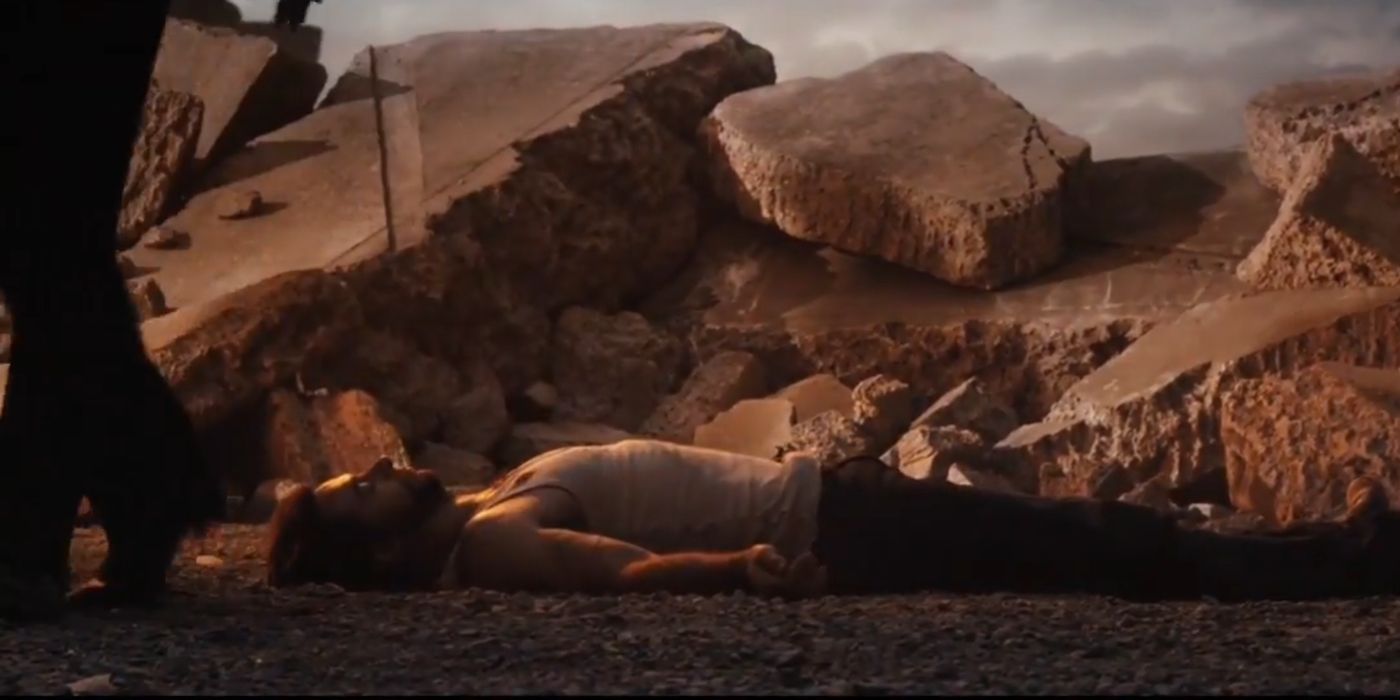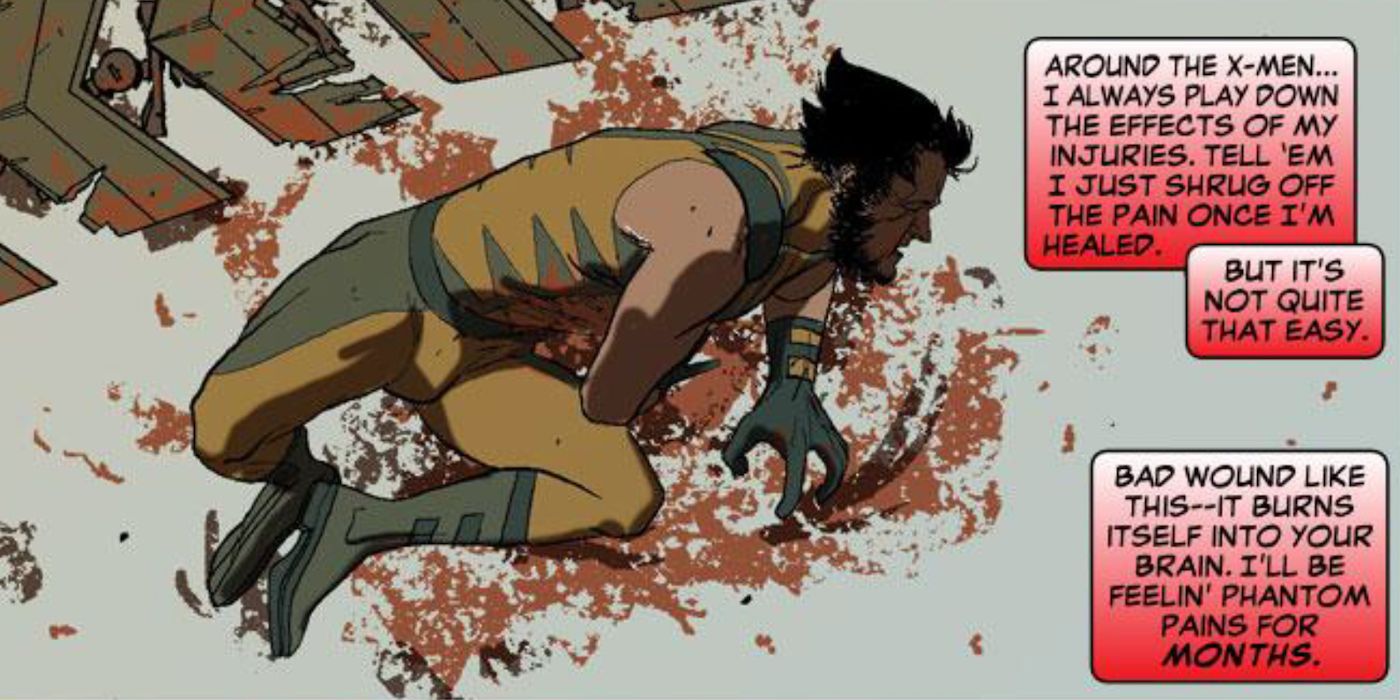Logan, the much-awaited, ostensibly final appearance of Hugh Jackman as the comic world's favorite stab-happy Canadian, has finally hit theaters. One of its major plot points concerns the antihero formerly known as Wolverine dealing with his own mortality as his trademark accelerated healing factor starts to slow down, and this has us thinking about that amazing ability.
Wolverine's main mutant power lets him heal almost immediately -- or just really, really quickly, depending on who's doing the writing -- from any injury. And this combines with his indestructible adamantium skeleton to make the character effectively unkillable. But Logan isn't the only character in Marvel comics with superhuman regeneration, and creators have come up with a fascinating number of variations to what seems on the surface to be a pretty straightforward and awesome gift.
Here are 15 things you probably didn't know about the Marvel Universe's healing factor, in its many forms.
15. It makes the bearer resistant to heat and cold
Always being comfortable, with or without a sweater, is probably the least impressive thing that an accelerated healing factor can do for you, but it can come in handy under certain circumstances.
In the "Planet X" storyline in New X-Men, Wolverine and Jean Grey find themselves trapped on a space station that is drifting into the sun. As the temperature rises, Jean isn't convinced they can get themselves out of the situation, which is about as dire a set of circumstances as we could imagine, and Logan tries to inspire hope by telling her a story about how he got stuck under a glacier and survived by eating himself. It probably doesn't lighten the mood at all, but it demonstrates that he's immune to frostbite, thanks to his cells regenerating as quickly as the cold can destroy them.
Eventually, Jean begins to succumb to the heat because she doesn't have a healing factor to keep her from dehydrating, so Wolverine kills her to end her suffering. This ends up releasing the extraterrestrial Phoenix Force inside of her, and that's good news for both of them, since we're pretty sure that not even Wolverine could survive inside a nuclear furnace. He can get way closer to it than any of us, though.
14. It's the only way to survive adamantium bonding
The Weapon X Program, which was the tenth attempt to re-create the process that created super soldier Captain America, introduced "Experiment X," a process through which its operators aimed to reinforce their subjects' skeletons with the indestructible alloy adamantium. It's a good idea, as mad science goes: Anyone who survives the procedure will be effectively unbreakable and mostly bulletproof. The only problem with injecting a person with enough molten metal to completely coat their skeleton is that it's usually fatal, for obvious reasons.
The only reason Wolverine and other mutants like X-23 and Lady Deathstrike (whose father perfected the bonding technique) survived is that their bodies can heal the damage that the liquid metal causes as quickly as it occurs. We don't like to think about the failed early attempts, which probably involved a lot of burns, boiling flesh, and smells that we never, ever want in our noses.
Even after the metal is in there, adamantium recipients face another problem because it's really not a good idea to have that much metal just all up in your body's soft tissues. Wolverine's healing process is constantly running in the background, trying to prevent the foreign material from poisoning him, and when he recently lost his abilities in the comics, Beast had to make a supplement to keep the harmful stuff at bay.
13. It can cure (almost) any illness
We already know from Deadpool that a superhuman healing factor comes in handy when you're dying from incurable, late-stage cancer that has taken over most of your major organs. Wade Wilson's mutant ability can take the bad cells out as fast as they grow, which means he gets to stay alive -- albeit with a face that looks like a burnt pizza.
But it isn't just terminal diseases; this mutant power makes the bearer impervious to anything. If he wanted to, Wolverine could eat undercooked pork off of the floor of a day care in January and not catch so much as a sniffle. Somehow, it's easier to imagine Deadpool doing that, but it is an option open to both of them if the circumstance arises.
In the '90s animated series X-Men, this ability provides a pretty neat solution for an outbreak of its version of the comics' Legacy Virus, which Apocalypse creates in a bid to rid the world of non-mutants. An alternate future has the disease targeting everyone, but the heroes manage to avert that by making sure Wolverine gets a bloodstream full of the stuff. His mutation-enhanced immune system immediately starts creating antibodies that Beast uses to synthesize a cure for everyone.
None of this is enough to spare Logan from the virus that turns everyone into flesh-craving monsters in the Marvel Zombies series, but Marvel Zombies is stupid, and it doesn't count.
12. Some users can't regenerate limbs (but can reattach them)
One of the weirdest bits in Deadpool, other than the one where we catch "The Merc with a Mouth" spending some quality time with a plush unicorn, is the part where the title character cuts off his own hand to escape from Colossus and continue his quest of bloody, hilarious revenge. The lost limb eventually grows back, which is pretty convenient, and Wilson is glad that his healing ability works that way. Not everyone has it so good.
Wolverine, for example, won't regenerate a lost body part -- assuming he goes up against someone capable of removing one. In the 2005-2009 miniseries Ultimate Wolverine vs. Hulk, Nick Fury tasks Logan with "taking care of" Bruce Banner's alter ego after he goes off a little more than usual. And when the two meet, their fight ends with Hulk straight-up ripping Wolverine in half at the waist and then throwing his legs four miles away. Because Logan can't grow new bits like Movie Deadpool, he has to claw his way up a mountain to reclaim his missing pieces.
And that's not even the worst injury Wolverine has in that series; later on, Fury brings him in and, in an attempt to keep him from murdering his way out of SHIELD custody, removes his head. Luckily for everyone in that building, neither the head nor the body grows into a new, intact, and angry mutant, so Wolverine is sufficiently incapacitated until the two parts are physically reunited.
11. An 'Anti-Healing Factor' exists that can disrupt its operation
A power without an opposite number is at risk of becoming too powerful, but comic book writers have always been pretty good at making stuff up to keep things interesting.
Somehow, it took until 2003 to come up with something that directly works against a healing factor, which comes in the form of an enzyme that the newly restored Weapon X program grants to Agent Zero. Zero can excrete the stuff from his hands, and if any of it gets onto a mutant while they're trying to repair some bodily harm, it causes them to do the exact opposite of that, by which we mean that their tissue will break down instead of pulling back together. It's really gross.
Agent Zero unleashes this ability on Sabretooth on a mission to bring him back to Weapon X alive, but one of the things about hiring dangerous mercenaries and giving them superpowers is that they won't always do what you tell them. The agent stops just short of killing his target, but that's only after he dissolves his damned hand.
10. Shapeshifters have a de facto healing factor
Characters like X-Men's Mystique can change their form to impersonate other people, and this total control over one's body should mean that they can close up wounds and reset broken bones.
It should, anyway, but it depends on who's doing the writing. At the end of the first X-Men movie, the superteam discovers that Mystique has replaced the late, anti-mutant Senator Robert Kelly after someone bumps "him" and hits the wounds Wolverine dealt earlier. And this raises a bunch of questions, because if Mystique can change her appearance to look like anyone, even people much larger/smaller than she is, or even a different race or gender, why can't she close up some claw wounds?
Odds are she can to some extent, or else she wouldn't be alive after the kind of wound that immediately kills dozens of characters in other films. But she probably couldn't fix her internal injuries, which should have also been fatal. We're willing to buy it, however, since we've already accepted all of that shapeshifting, superhuman healing, and every other mutant power on display in these movies and books.
9. Hulk heals faster the angrier he gets
The Incredible Hulk has his own healing abilities, and like his strength, it gets more powerful as his rage builds. In the 1988 story "Vicious Circle" in The Incredible Hulk #340, Hulk and Logan have one of their many, many fights, and the scrappy Canadian puts it all together after his opponent gets up after receiving several claw strikes to his chest.
"I always thought the Hulk's skin was impenetrable," Wolverine thinks. "I was wrong. But his cells reproduce so fast it seems that way. And the madder he gets, the more his system speeds up. The more cells he produces ... he gets tougher. Stronger. Harder to hurt."
Logan sees Hulk as Banner's partly benevolent cancer brought on by the intense gamma radiation that caused him to transform in the first place: His "purpose" is to grow as big as possible with the fuel at hand (in this case, anger). It's a solid comparison, even ignoring the fact that the Green Goliath is already a metaphor for unchecked, suppressed feelings and emotional abuse. But Hulk is so big that he can contain all kinds of subtexts.
8. Courier's healing follows the Law of Conservation of Mass
One of the biggest issues that arises when applying rational thinking to superhuman healing is the question of where the new tissue comes from. Most of the time, comics take the healthy attitude of, "Just don't even worry about it," but it still bears some attention.
Jacob "Courier" Galvin Jr's mutant ability is complete control over every cell in his body like the monster from John Carpenter's classic horror film The Thing, which means that he can not only change shape, but he can actually "regrow" lost limbs by repurposing his existing mass to replace whatever's missing, assuming he can't just get the severed bit back and jam it on there, Arm-Fall-Off Boy-style. Unfortunately for Courier, this means that every time he has to do this, he pays a bit of a price.
We see him do this in a 1999 issue of Gambit's solo book, when the Cajun thief trades one of Galvin's fingers to Mr. Sinister to get out of a bind. Sinister leaps at the opportunity to study a specimen from such a unique mutant, and because Gambit is like 90 percent a-hole, he has Courier order the cells in his abandoned digit to die as soon as they're clear.
Courier does so and sprouts a new finger, all the while complaining that he's replaced so many missing parts this way that he's at least five inches shorter than he used to be. It's probably worth it, though, because that's a pretty sweet superpower.
7. Mr. Immortal's power only works if he dies
Most interesting superpowers have a downside or a limitation; Superman's x-ray vision can't see through lead, the Green Lantern Corps' Power Rings didn't work against yellow, and Rogue's power-draining ability is impossible to turn off. And even the seemingly downside-free power of healing any injury has a catch for Craig Hollis, who fights for justice as Mr. Immortal.
The leader of the Great Lakes Avengers, who make their home in the surprisingly supercrime-riddled city of Milwaukee, Wisconsin, can bounce back from any grievous wound bad guys can inflict on him -- provided it's fatal. And while that's technically a resurrection power more than an accelerated healing factor, we're inclined to count it because he revives almost immediately with all of his injuries healed.
The problem is that Hollis has to die for his power to activate, and people can survive a surprising number of horrifying, painful, deeply unpleasant wounds. If Mr. Immortal is paralyzed, maimed, or otherwise incapacitated, but alive, his body won't repair anything unless someone finishes him off. He could also find a way to kill himself, and we know that he isn't squeamish about that, because he only discovered his ability in the first place after several suicide attempts failed.
6. Carbonadium is like Wolverine's Kryptonite
The poor man's adamantium, carbonadium is the stuff that Russian supersoldier Omega Red's wrist coils are made of. It's not as strong as the alloy that's piggybacking on Wolverine's bones, but it has its own amazing qualities. Specifically, it's so radioactive that it can interfere with mutant healing ability. But to be fair, it would probably kill a normal person.
Carbonadium isn't just effective against Wolverine; its other uses include Doctor Octopus' tentacles, alternate Wade Wilson's katanas in 2012's Deadpool Kills the Marvel Universe (in which he's called "Dreadpool" because that's way more edgy), and metal plating that protects Octavius' neck from his own body-swapping robots after he switches minds with Spider-Man. But that last one is a really long story.
Villains are also fond of building bullets out of the stuff in case they go up against Wolverine, his son Dakan, Deadpool, or anyone else likely to just shrug off normal ammo. And this is unsurprising, because if we've learned nothing else from reading Marvel Comics, it's that once you introduce a super-metal of any kind, it's only a matter of time until some evildoer figures out how to shoot it out of a gun.
5. The Skrulls tried to copy Deadpool's healing ability (and failed spectacularly)
Just as Wolverine's adamantium-laced skeleton comes from attempts to replicate Captain America, so too do several other endeavors try to replicate his ability to heal. A successful go at this gave us Deadpool, and an unsuccessful one gave us exploding Super-Skrulls.
The Skrulls are a race of shapeshifting aliens who have tried several times to take over the planet, most notably in the "Secret Invasion" storyline from 2008. Typically, "Super-Skrull" refers to a specific character, an extra-powered member of the species who has all the abilities of the Fantastic Four. But a 2008 Deadpool story has Wade Wilson "defecting" to the alien force. They identify his amazing healing ability and realize that if they could synthesize it, they could create an unstoppable army of Super-Skrulls. And they succeed -- at first.
A fresh, young batch of murderguys shows a lot of promise until the scientist in charge of creating them realizes that Deadpool's "training" consists of making them as madcap crazy as he is. He reaches this conclusion once they immediately start killing each other while making puerile jokes. But that's not all, because the new batch of Super-Skrulls is missing an important ingredient.
It turns out that when the Weapon X Project gave Deadpool his healing ability, they calibrated it specifically to his body -- you know, the one that was all full-up with cancer. The project leaders created his superpower to fight cancer and replace his destroyed tissue immediately, which means that the tumor-free Skrulls just keep creating unnecessary "replacement" cells uncontrollably until they explode.
This was all part of Deadpool's insane plan to infiltrate the Skrulls, deplete their non-super forces through "training skirmishes," and then leave them nothing after their remaining soldiers burst into so much green gloop.
4. Wolverine once came back from practically nothing
The DC universe's antihero bounty hunter Lobo has a healing factor so powerful that if he got hurt so badly that he shed blood, each drop of fluid would eventually grow into another Lobo. The copies would all immediately fall upon each other until only one of them was left alive, and the survivor would just go back to the business of being "the main man." This has actually happened a few times.
It's a good thing Marvel Comics' equivalent isn't silly like that -- except when it totally is. The 1987 Uncanny X-Men Annual has the team going up against Horde, an alien warlord. Eventually, it comes down to just Wolverine and the villain, who impales Logan on a spear and then rips out his heart. And even if you can heal injuries as quickly as you can incur them, that's a kill shot. What Horde didn't plan on, however, was a single drop of Wolverine's blood landing on the super-powerful crystal that everyone's fighting over. And yes, that is enough.
The crystal's energy reconstitutes the hero almost immediately, and his first act is to murder Horde, because killing bad guys is most of what Wolverine does. And to his credit, the villain was just as incredulous about all of this as we were.
3. It makes it really hard to get drunk
One way to think of an enhanced healing factor is as a suped-up metabolism; it's a highly accelerated version of the body's natural processes. And that probably means that Wolverine shouldn't be as ripped as he is unless he eats a few dozen eggs and the chickens that laid them every day, but we can still use some work on suspending our disbelief.
The main thing, however, is that while Wolverine loves his beer and whiskey, he has to drink a lot of it before he'll start to feel anything. The titular hero on the CW series The Flash has the same problem, since his connection to the Speed Force that grants him super-speed and, yes, fast healing, makes it impossible for him to get drunk at all. But luckily for Wolverine, with enough time and effort, he can get a proper buzz on.
Logan is also highly resistant to anesthetic; SHIELD once had to pump 80 milliliters of anesthetic a minute into him to keep him sedated while they tried to remove some HYDRA programming that made him go rogue. For reference, that's about 8,000 times the recommended maximum dosage of propofol, a commonly used anesthetic. We don't know that that is what SHIELD was using in that case, but that's still a lot of milliliters. Imagine how much booze the guy needs to drink to feel it.
2. It shouldn't work on memories
We'd be hard-pressed to find someone who thought the prequel film X-Men Origins: Wolverine did either the character or the X-Men film universe justice, but it does present an interesting idea that lines up with real-world science.
Origins explains Logan's years' worth of lost memories with a couple adamantium bullets to the brain. Because it's made of the same material that coats the mutant's skull like so much Pepto-Bismol, it can punch right through and scramble up his brains. And that would be a problem without the healing factor, which apparently works even if the brain isn't completely intact.
But for all its (many, many, many) shortcomings, Origins is right about one thing: memories are not physical structures that you can rebuild if they're destroyed. They're complex, electro-chemical processes that rebuild past experiences from scratch every time you recall them. The permanence of most memories or knowledge depends on your neurons repeatedly transmitting the same pattern of impulses over time. And that means that while Wolverine can make new neurons if they're destroyed, his fresh ones, which presumably haven't experienced anything, won't have the practice required to bring up memories.
It's like replacing a pair of shoes: Even if you get a new pair that are the exact brand and style as your old ones, they won't feel the same because you haven't broken them in yet. So as much as we all hate to admit it, Origins did get one thing right, even if every other comic, TV show, and movie about Wolverine has ignored that bit.
1. Wolverine suffers phantom pain from past injuries
To look at it, especially in the X-Men movies, accelerated healing seems like a pretty sweet deal: injuries close up immediately, and the affected mutant goes on with their life. But a story in the comics series X-Men: Unlimited reveals that Wolverine has a few more steps to take on the road to recovery.
"The Healing" starts with Logan lying in the snow in Nunavut, Canada, having just suffered a devastating injury that has spilled his guts everywhere and should have killed him. But he's a superhero, so all he has to do is lie there and wait for his body to put itself together. Meanwhile, his inner monologue provides some insight into how it works and the mental techniques he uses to handle the pain. But mixed in with all of that is a surprising revelation.
"Around the X-Men ... I always play down the effects of my injuries," he says. "Tell 'em I just shrug off the pain once I'm healed. But it's not quite that easy. Bad wound like this -- it burns itself into your brain. I'll be feelin' phantom pains for months."
This makes sense, but it's a huge bummer, especially considering how often Wolverine tends to suffer catastrophic injuries. Still, real-world sufferers of phantom pains usually deal with them for years, so at least even the after-effects aren't as lengthy.
--
Do you know of any other fun facts surrounding the all-powerful healing factor of the Marvel Universe? Let us know in the comments.

